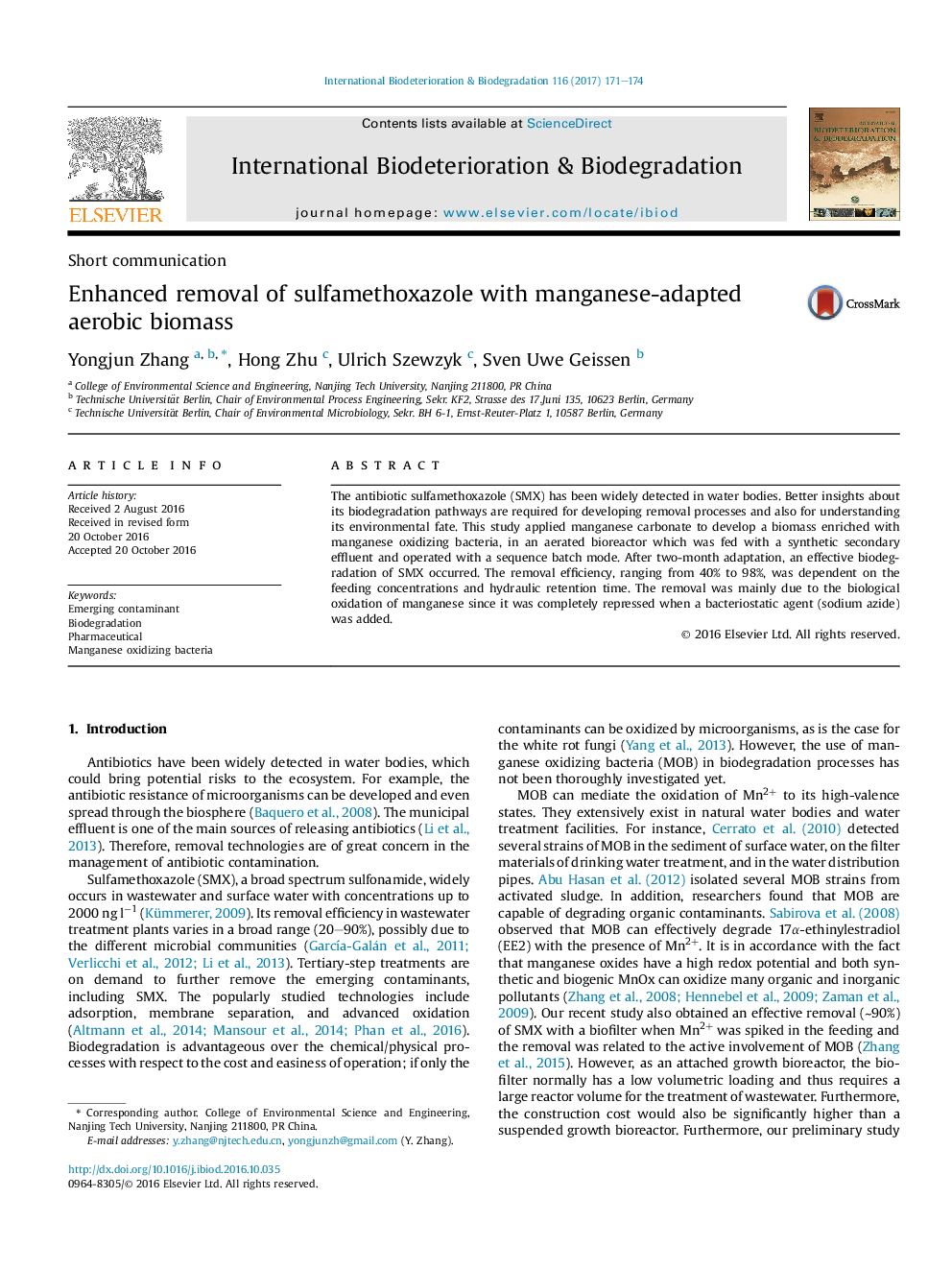| Article ID | Journal | Published Year | Pages | File Type |
|---|---|---|---|---|
| 8844007 | International Biodeterioration & Biodegradation | 2017 | 4 Pages |
Abstract
The antibiotic sulfamethoxazole (SMX) has been widely detected in water bodies. Better insights about its biodegradation pathways are required for developing removal processes and also for understanding its environmental fate. This study applied manganese carbonate to develop a biomass enriched with manganese oxidizing bacteria, in an aerated bioreactor which was fed with a synthetic secondary effluent and operated with a sequence batch mode. After two-month adaptation, an effective biodegradation of SMX occurred. The removal efficiency, ranging from 40% to 98%, was dependent on the feeding concentrations and hydraulic retention time. The removal was mainly due to the biological oxidation of manganese since it was completely repressed when a bacteriostatic agent (sodium azide) was added.
Related Topics
Life Sciences
Environmental Science
Environmental Science (General)
Authors
Yongjun Zhang, Hong Zhu, Ulrich Szewzyk, Sven Uwe Geissen,
